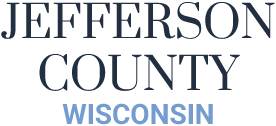
By Steve Sharp: wdtimes.com
JEFFERSON — One of the many jewels of Jefferson County’s park system will be getting some extra sparkle, thanks to a donation by a neighboring family.
As recommended by its Parks Committee, the Jefferson County Board of Supervisors on Tuesday accepted a two-acre parcel of property to expand the Indian Mounds and Trail Park south of Fort Atkinson. The property is located on the northeast corner of the intersection of Koshkonong Mounds and Vinne Ha Ha roads.
Indian Mounds and Trail Park is a gem of a park located along Koshkonong Mounds Road in the Town of Koshkonong. The 5.2-acre park is home to 11 American Indian effigy mounds that include symmetrical and animal effigy shapes built by Native Americans between 650 and 1200 A.D.
According to the resolution approved by the board during its monthly meeting, Gary, Jill and David Gramley offered to donate to the county approximately 2 acres of their land adjoining Indian Mounds Park. Their land contains several prime examples of mounds.
“By accepting this donation and expanding Indian Mounds Park, Jefferson County will be able to ensure that these Indian effigy mounds will be permanently protected and (it can) preserve a valuable Native American heritage (asset) for future generations,” the Parks Committee wrote in its resolution that was approved quickly and unanimously.
Acceptance of this donation will increase the size of Indian Mounds Park to approximately 7 acres. This being a gift to the county, there is no fiscal impact.
Jefferson County Parks Director Joe Nehmer has experienced other immeasurably important land donations to the county during his tenure. Many other such acts of generosity have allowed for the perpetual protection of the area’s American Indian mounds.
“To the best of my knowledge, this donation takes in all, or a portion of, eight more mounds,” Nehmer said. “At this point, the best I can say — not being a scientist — is that the property contains conical, linear and bird effigies. There may also be a turtle,” Nehmer said after the meeting.
The mounds appear to be in excellent condition, according to Nehmer, and are without disruption.
“This is all part of the General Atkinson Mound Group, perhaps the single-largest mound group in Wisconsin,” Nehmer said, “many of which have been destroyed.”
The county has yet to acquire the property and it needs to complete a survey and transfer the land title.
“We are grateful and appreciative of this donation,” Nehmer said. “It’s people like the Gramleys who have built the park system in Jefferson County and this is a very selfless example of how that happens. We cannot honor these people enough.”
After the land title is transferred, the county will work on a management plan, starting with control of invasive species. Then the public will be able to visit all the mounds.
The first chance for the general public to visit the new land acquisition could be yet this year. The county also wants to get the added mounds labeled so they are not desecrated in any way by people visiting the park.
Although the county has conferred with the Ho-Chunk Nation regarding other mound sites, there has been no contact yet with the tribe regarding this latest mound acquisition. Nehmer said, however, the county welcomes any comments or suggestions the Ho-Chunk people might have.
Located on the south side of Koshkonong Mounds Road near its intersection with Vinne Ha Ha Road, the mounds were part of a 21-acre tract of land purchased by the late Hugh Highsmith from Charles McIntyre on Sept. 9, 1991.
The county, after being presented monies from the Fort Atkinson Historical Society, a special Fort Atkinson Community Foundation fund and a private donor, then bought the 5.2 acres containing the mounds from Highsmith the following day.
There originally were 23 mound groups around Lake Koshkonong and many still are there, at least in part.
The 11 current park mounds were first surveyed by Increase A. Lapham in 1850. In 1898, Stephen D. Peet, editor of the “American Antiquarian,” did a more comprehensive survey with descriptions and drawings of the mound group, which at that time extended north across Mounds Road.
The 11 mounds became part of the Gen. Atkiinson Mound Group of 72 effigy mounds that were recorded by A.B. Stout and H.L. Skavlem in 1908.
The most outstanding mound in the current park is the one identified as No. 60, measuring 222 feet in length. Stout called it a long-tailed turtle, but wrote that it differs from the turtle effigy in profile, as well as outline. The head is considerably higher than the part midway between the hind limbs. Peet, however, called it a lizard due to the crooked legs.
Either way, it is that mound, in fact, that was photographed in 1915 by the Milwaukee Public Museum and used for years to illustrate the section on “mound builders” in the World Book Encyclopedia.
